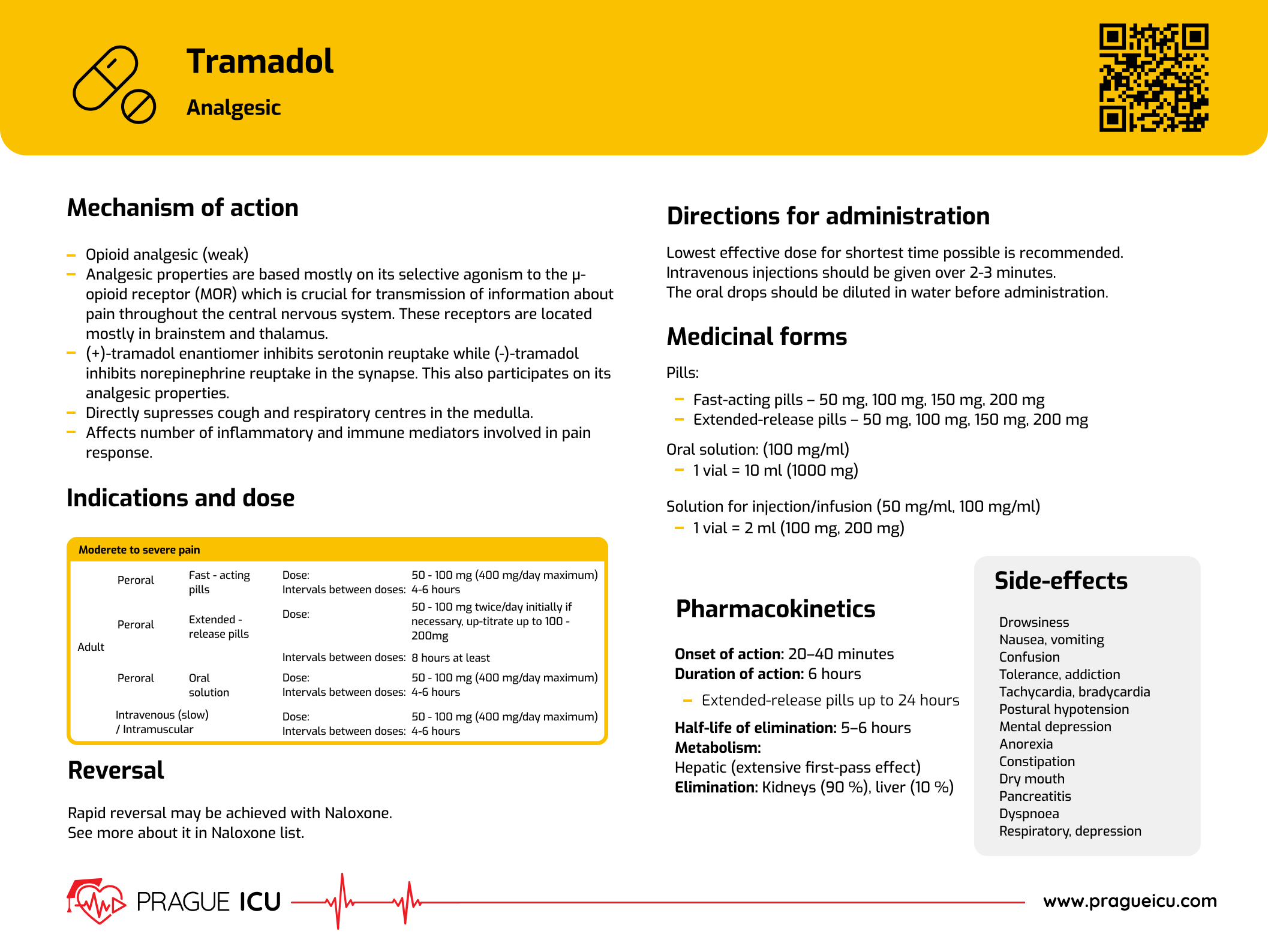
Mechanism of action
- Opioid analgesic (weak)
- Analgesic properties are based mostly on its selective agonism to the μ-opioid receptor (MOR) which is crucial for transmission of information about pain throughout the central nervous system. These receptors are located mostly in brainstem and thalamus.
- (+)-tramadol enantiomer inhibits serotonin reuptake while (-)-tramadol inhibits norepinephrine reuptake in the synapse. This also participates on its analgesic properties.
- Directly supresses cough and respiratory centres in the medulla.
- Affects number of inflammatory and immune mediators involved in pain response.
Indications and dose

Pharmacokinetics
Onset of action: 20–40 minutes
Duration of action: 6 hours
- Extended-release pills up to 24 hours
Half-life of elimination: 5–6 hours
Metabolism: Hepatic (extensive first-pass effect)
Elimination: Kidneys (90 %), liver (10 %)
Directions for administration
Lowest effective dose for shortest time possible is recommended.
Intravenous injections should be given over 2-3 minutes.
The oral drops should be diluted in water before administration.
Medicinal forms
Pills:
- Fast-acting pills – 50 mg, 100 mg, 150 mg, 200 mg
- Extended-release pills – 50 mg, 100 mg, 150 mg, 200 mg
Oral solution: (100 mg/ml)
- 1 vial = 10 ml (1000 mg)
Solution for injection/infusion (50 mg/ml, 100 mg/ml)
- 1 vial = 2 ml (100 mg, 200 mg)
Side-effects
Drowsiness
Nausea, vomiting
Confusion
Tolerance, addiction
Tachycardia, bradycardia
Postural hypotension
Mental depression
Anorexia
Constipation
Dry mouth
Pancreatitis
Dyspnoea
Respiratory depression
Reversal
Rapid reversal may be achieved with Naloxone.
See more about it in Naloxone list.
References





